Glossary O-P-R
Object: Digitizing and/or editing software term used to describe elements of the embroidery design.
Operating System: Computer software designed as a base system to support other software programs and/or hardware.
Operator: Person running an embroidery machine.
Organdy: A stiff, transparent fabric sometimes used for backing.
Outline: 1.Running, double or bean stitch used to define embroidery details in designs. 2. Digitizing capability to input points to define the perimeter of the embroidered area.
Patch: See Emblem.
Pantograph: A bar, rack or holder that frames or holding fixtures are attached to. The pantograph moves in X and Y directions to form the embroidery design, controlled electronically or mechanically depending on the machine. See picture.
Pantograph
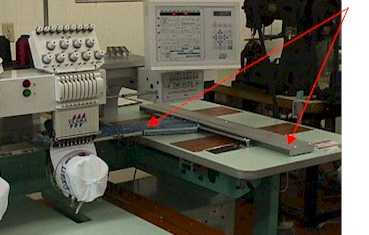
Paper Tape: 1-inch tape with holes punched in it to represent the embroidery design. Read electronically by a paper tape reader. Tape is made from a variety of substances including paper and Mylar. Also referred to as 8 channel tape or electronic jacquard. See picture.
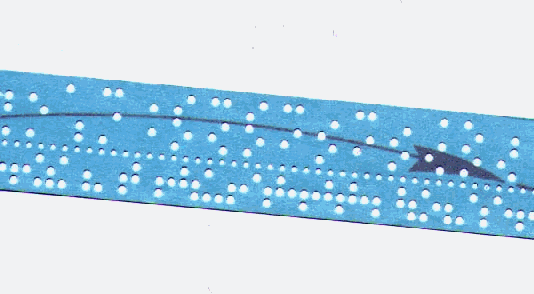
Paper Tape Punch: Device that punches the holes in a paper tape. Can be a manual or electronic punch.
Paper Tape Reader: Device to electronically read paper tapes and transmit data to embroidery machine for stitching. See picture.
One style of Paper Tape Reader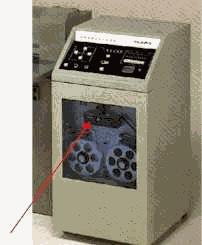
Pattern Fill: Ceeding stitches with a pattern or repeating pattern within the fill. See Motif Fill. See picture.
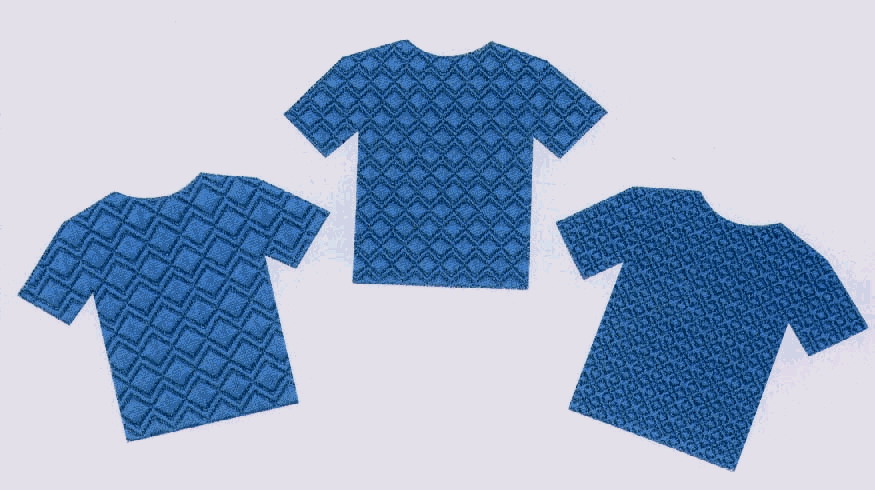
Pitch: Degree or angle of stitches in reference to a baseline.
Points: 1. Unit of measurement in embroidery, 10 points equals 1mm. 2. Digitizing term describing the entry commands of the outline.
Presser Foot: Metal device that touches the goods being embroidered while the needle is in the goods. The main function of the presser foot is to hold the material being embroidered until the hook point catches the thread loop formed by the needle rise. Helps to control flagging. See picture.
Presser Foot 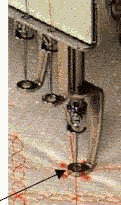
Pretensioner: Thread tension assemblies that are before the main tension assembly in the thread path. The function of the pretensioner is to apply a light amount of tension in order to make the main tensioner work. See picture.
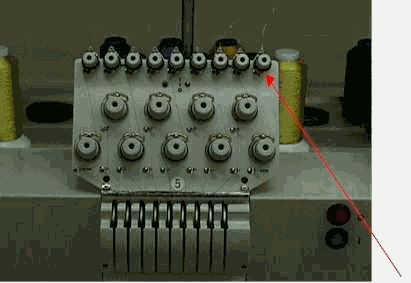 Pretensioner
Pretensioner
Puckering: Fabric being gathered into small folds or wrinkles can be caused by the penetration of the needle, thread tension, inadequate hooping tension or by the density of the stitches.
Punching: Converting embroidery cartoons into a paper tape or a jacquard tape. Refers to the punched holes used by both.
Puncher: The terms puncher and digitizer are often interchanged in embroidery. Puncher originated with the creators of Jacquard punch cards and Schiffli. Refers to the person who used the punch machine to translate the embroidery cartoon into an embroidery tape to be read by an embroidery machine. Punchers entered every stitch of the design by aligning a stylus over the cartoon and pressing a button "punching" a hole on the card or tape or producing a machine movement. Digitizing is done by entering points which the embroidery software/computer or machine translates into stitches.
Registration: Alignment of the embroidery design elements.
Repeat: Also called step and repeat. 1. Layout used for making emblems or designs on a fabric span that are repeated at regular intervals. 2. Number of times a design or emblem can be repeated in the sewing field of an embroidery machine. 2. Software function or command to repeat a set of commands in digitizing. See picture.
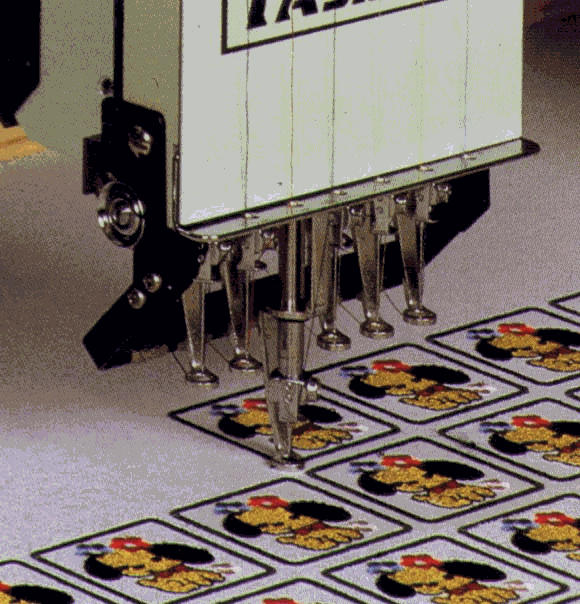
Repeat
Rotary Hook: See Hook.
Running Stitch: 1. One stitch between two needle penetrations. 2. Continuous line of stitching between two points. Generally used for detail and outline work in an embroidery design. Also called a Walk Stitch or a Walking Stitch. See Guide Stitch for picture.
